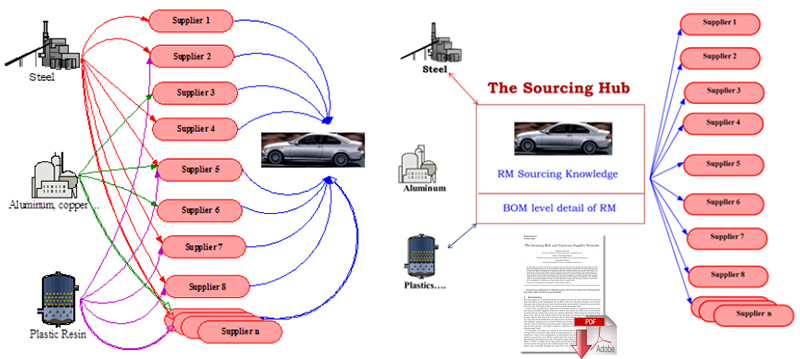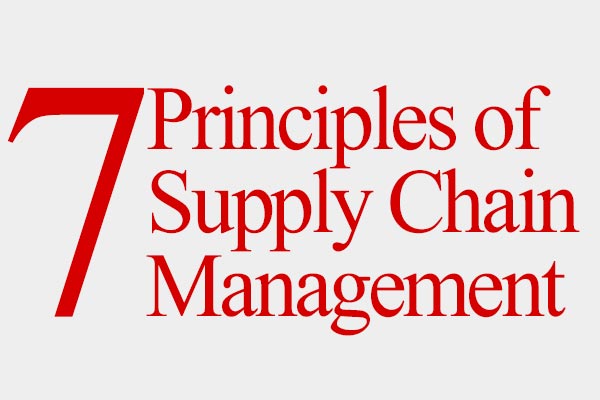‘Sourcing Hub’ Could Help Create a More Efficient Supply Chain
Firms can manage their sourcing better by developing relationships not only with their suppliers but also with their suppliers' suppliers, according to two papers co-written by a University of Illinois expert in supply chain management.
The lack of communication or collaboration between the big players at either end of the supply chain spectrum prevents companies from gaining efficiencies in costs, design and materials, says Anupam Agrawal, a professor of business administration at the University of Illinois.
“There’s more power at the end of supply chains, and we found that not talking to the firm that provides your suppliers with their raw materials is not very helpful,” he said. “We think that there’s a lot of efficiency to be gained there.”
If you’re an automobile company, you’re buying parts that contain steel and aluminum from small suppliers, who, in turn, buy these raw materials from another firm. And these main suppliers of raw materials, whether it’s raw aluminum or raw steel, are fewer and as big, if not bigger, than the automotive firms – “as big as Ford or GM, but on the other side of the supply line,” Agrawal said.
“But we find that most companies focused on producing cars and trucks don’t have open lines of communication with the firms that produce steel or aluminum,” he said. “They only talk to the middle men, the suppliers. The auto firms believe they should only focus on what they do best, and that it’s incumbent upon their suppliers to talk to the raw material supplier.”
But that’s a shortsighted proposition, according to Agrawal.
“There is a lot of value in the big players at the far ends of the supply chain talking to each,” he said. “As a firm, you become much more competitive.”
According to the paper, the creation of a “sourcing hub” – a collaborative center involving the firm, its suppliers and raw material suppliers as a mechanism for capturing and deploying sourcing knowledge of the raw material – would be beneficial.
“It’s a place where the buyer and suppliers can come together and evaluate what, exactly, is good for everybody,” he said. “The idea is powerful and simple and seems to make a lot of sense on its face, but for the most part, it hasn’t happened yet.”
The firm that manufactures the raw materials also knows more about its product than the suppliers, Agrawal said.
“Let’s say you’re manufacturing a car and it’s made of aluminum,” he said. “Well, first of all, there are many different types of aluminum to pick from, and in one of our cases studies we discovered that one firm was using 29 different types of aluminum. When they talked to the aluminum supplier, the supplier told them, ‘Look, many of these types are similar and, in fact, we have better stuff.’ Those 29 different types were reduced to 17.
So it reduces complexity, too, because you’re going to the aluminum specialist and looking at him for everything you buy whereas a particular supplier is only talking to the aluminum supplier for that one component. As far as the supplier is concerned, they’re optimizing their discrete product.
“Therefore, choosing to use different grades of raw materials, or choosing to simplify your design or manufacturing processes, is far more effective and valuable than mere negotiation-based production and cost.”
If a car manufacturer is a big purchaser of aluminum or steel in a country or in a market, the car maker also can leverage that advantage with a volume-based discount from the raw material manufacturer and better lending rates from banks, Agrawal said.
“Whether you’re a big firm or one of the hundreds of suppliers, you have to go to the bank to get money,” he said. “You can also go to shareholders and get money from the market. In general, though, because you’re a big company like Ford, GM or BMW, the cost of capital at which you will get money is lower than what your suppliers can get. Banks will charge them higher interest rates because they are smaller. So you’re only paying the bank a half-percent whereas your supplier would pay 2 percent for the same money. When you’re a big firm, you have more negotiating power for money, too.
“Therefore, if you buy raw material using your money, you not only procure a volume-based discount, but also the money you’re using to buy it has been financed at a lesser rate of interest. This reduces costs.”
According to Agrawal, the sourcing hub is scalable to other industries that require a considerable amount of raw material to produce goods.
“It’s applicable to everything from aerospace and appliances to apparel and footwear,” he said. “And it’s not only about better cost. Firms will also receive better advice on what raw material to use.”
The research is relevant to business, but it’s also robust from an academic standpoint, Agrawal said.
“Based on what we have learned in over four years of studying this issue, the advantages are there for everybody,” he said. “No one loses in this. If you’re talking to firms at the back-end of the supply chain, it’s not that somebody’s purse is getting lighter. Everyone wins because the primary focus need not be on cost reduction. The primary focus is on simplification, complexity reduction and improvement of designs. That really moves out cost in the supply chain for everybody. And everyone benefits with stronger relationships.”
Source: News Bureau | University of Illinois














